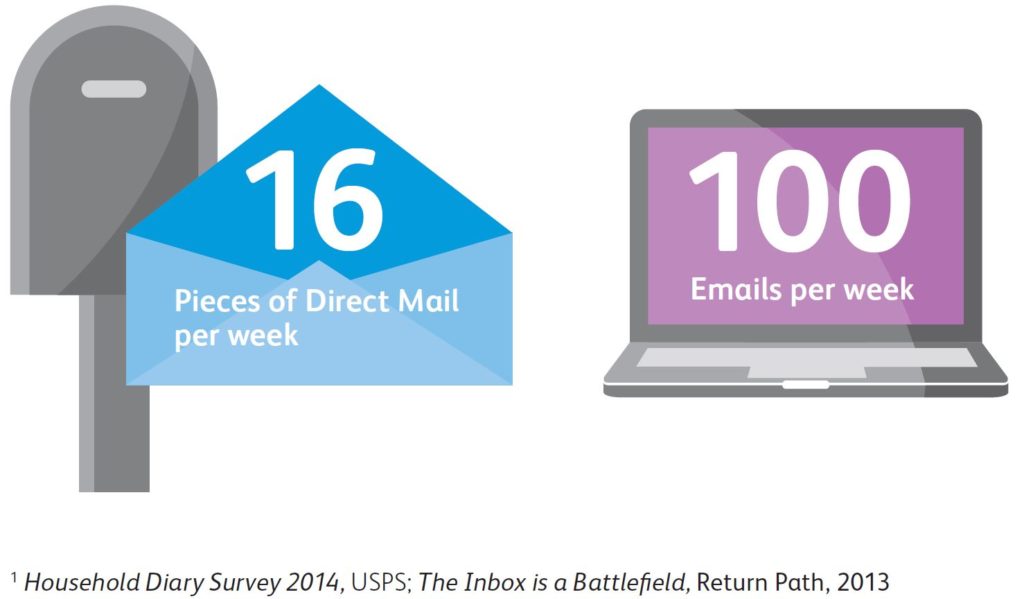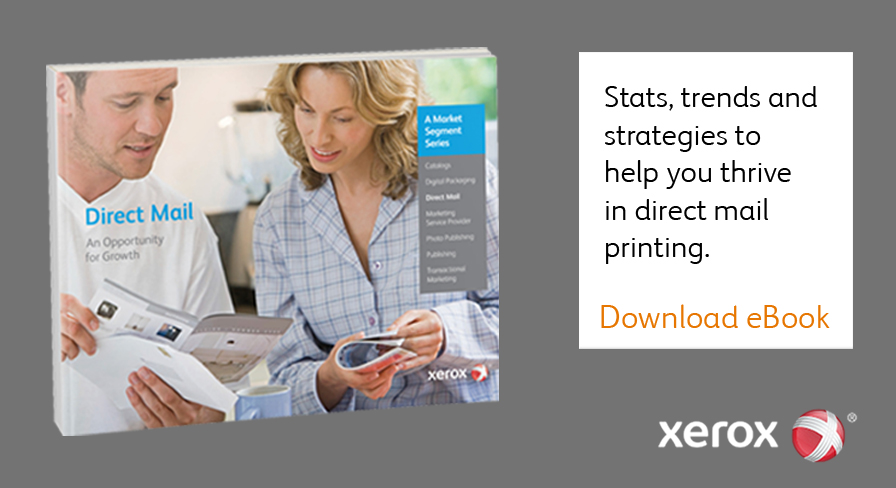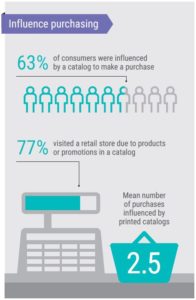
It was a Saturday afternoon in late October 1938. Inside a second-story Astoria, Queens apartment, a patent attorney named Chester Carlson was working feverishly on an innovation that would forever change the landscape for how business was conducted for decades to come. Carlson’s invention, the world’s first dry copy, would eventually lead to the formation of Xerox Corporation.
Today, Carlson’s xerographic process is still at the heart of most office printers and copiers around the world, dramatically impacting the way businesses operate and we communicate. It can be argued that the digital age – and the access to information it enables – began with the xerographic process.
A recent Mashable article discussed this very notion, attributing Carlson’s innovation to the rise of modern computing. Ironic, then, that many of print’s naysayers predict the fall of Carlson’s xerography to come at the very hands of the computing era his innovation helped pave the path for.
But don’t worry, writes Patrick Henry of WhatTheyThink: No matter what its critics say, print is doing just fine. In fact, 76% of small businesses state that their ideal marketing mix is a combination of digital communications and print.
To commemorate more than 75 years since the first xerographic image, here’s 5 reasons why print should be part of your marketing mix today, tomorrow and always:
1. Print Provides an Opportunity to Differentiate

- 96% of media users still read trade magazines to keep up on what’s happening in their industry, with 45% saying they read a print magazine at least weekly (ABM)
- The United States Postal Service found that 98% of consumers bring in their mail the day it is delivered, with 77% sorting it immediately.
- Roughly 80% of all physical mail is opened, while the open rate of emails is only about 20% (DMNews)
2. Print is Viewed as Trustworthy
- 56% respondents say they found printed material to be the ‘most trustworthy’ of media channels (Print in the Mix survey)
- The same survey found that nearly half of the respondents said they’ve retained a direct mail piece for future reference, and 17% regularly do so.
- A study by VTT found that consumers trust advertising in print media more than any other media.
3. Print Connects the Online and Offline Worlds
- Printing Industries of America found that 67% of online searches are driven by offline messages, with 39% of shoppers making a purchase.
- Shoppers who receive a direct mail piece directing them to an online site spend an average 13% more than those who do not receive a printed piece (Printing Industries of America).
- 77% of consumers receiving printed catalogs visited a retail store due to products or promotions in a catalog (InfoTrends)
- Websites supported by catalogs yield 163% more revenue than those not supported by catalogs (Printing Industries of America).
4. Print Delivers Results (Think Lead Generation!)
-

Click to get the latest Catalog stats
Print delivers a higher response rate compared to email. The CMO Council found that the average response rate for emails is 0.12%, whereas the average response rate for direct mail is 4.4%. - Just 11% of marketing emails are opened, while the open-rate for prospecting direct mail is 91% (Mail Media Centre).
- Cost-per-lead is lower with print than with email. According to Printing Industries of America, acquiring a lead through a printed catalogs costs, on average, $47.61. Meanwhile, the average cost per email lead is $53.85.
- 79% of consumers act on a brand’s direct mail piece immediately (Print in the Mix)
5. Print has a Proven, Loyal Following
- Consumers expect Direct Mail, as 33% of those surveyed say they’d have a negative view of a brand not offering printed communications.
- 70% of Americans prefer to read printed paper over a digital screen, with 67% preferring the feel of print media (TwoSides).
- When it comes to transactional statements, Two Sides found that 64% consumers wouldn’t choose a company that didn’t offer a paper bill option.
- 75% B2B professionals read magazines on weekly basis, with 68% choosing to read niche publications specific to their industry.



I can’t believe there aren’t more comments on this post. This is one of the strongest cases for print I’ve seen.
Katherine – I appreciate your comment and know that each day you and PrintFirm celebrate the magnificent opportunities enabled through print!
Thanks for stopping by and commenting on this special blog post commemorating 75 years of xerography.
Bill (Xerox)
I am proud that we can share our experiences and practices through this network. But my english is not good. Sorry
Thank you for the kind words, Lupe! And you are right – I think this post epitomizes some of the many things the print community can feel very proud about – especially as it relates to the effectiveness of print.
We are fortunate to have a great network of folks in the print industry that visit this blog to share their experiences and insight – I hope you will visit again soon!
Bill (Xerox)
Bill you fail to note that print can be very powerful but is all in the content being relevant to the individual and it should be used in conjunction with digital so as to measure. you should not spend money on marketing if it cannot be measured!
Thank you for the comment, Ross – and you are absolutely right – relevancy and content are without question two of the most critical ingredients in the effective use of print.
Research has shown that the more channels you can use to reach your recipients, the greater the response and conversion rates. Combining digital/online with print is an extremely powerful method – but as you mentioned, the messaging needs to be relevant.
Thank you for stopping by to comment!
Bill (Xerox)
These are some great stats! I’m actually surprised that companies don’t use direct mail more to promote to their online efforts. With the advent of the QR code, it’s extremely easy to drive traffic to websites. The more ways you can reach out to a prospect, the the better the response rates are going to be.
Yes print works great article
Great points, Greg! Other technologies, such as augmented reality and near field communications also help quantify traffic and track metrics – all while engaging with your audience at a deeper level.
Thanks for the comment!
Bill (Xerox)
You’ve done a stellar job of summarizing the case for print — much appreciated! In this context, there is an interesting (and ironic) opportunity for print that has arisen due to the changing nature of both B2B and B2B sales cycles. Because buyers do so much of their research online, the role of the traditional sales person has been diminished. The old tactic of using meetings and phone conversations to have an early influence on the needs analysis just does not work. Buyers do not want to deal with sales people. In this article titled Lower Your Cost of Sales and “Get in Early” with Custom Print Catalogs, we argue that sales people should instead focus on using print publications as a friendly, service-oriented way to regain that influence and trust. For all the reasons given in your article, personalized print publications serve as a welcome surrogate for the sales person. Annoyance is replaced by gratitude.
When you say “75% B2B professionals read magazines on weekly basis, with 68% choosing to read niche publications specific to their industry.” – My response is to agree, however knowing which publications will be most useful to you (and the things you will say in your advertisements) are much easier to determine using online advertising – the Google Display network for one.
The point is that online advertising is fast and inexpensive where published media is not. Running the two together with online advertising determining how things get set up is the best use of both worlds.
Yes this is realty and great points.
At initial stage for my own business I was confused but after getting the online printing services from the newprint I can evaluate the results easily. So printing and presentation works a lot in your marketing.
Excellent summary of key arguments for print. I believe print is an ESSENTIAL part of the mix because it is tangible and lasting documentation and believable proof when written and designed correctly.
Print is essential for credibility. Downloads and printing from a website are problematic however due to no control of print or paper quality.
The US Postal Service is under attack and marketers must remember that this essential pipeline into the minds of hearts of consumers is indispensable.
Too many marketers look at the up front costs of design, print, and postage instead of considering the real cost – the opportunity cost of not using it.
Thank you for this article.
Tim – thank you for your additional insight and the link to the article. I’d like to call special attention to a statistic referenced in that article, as it is very significant: The CEB found that “B2B customers are 57% of the way through the buying decision” before the customer’s first contact with the supplier. Especially today with the barrage of marketing messages we are all exposed to on a daily basis, print really does provide a unique opportunity to cut through the clutter and ensure that your messaging is reaching your targeted recipients. When done correctly, with content that is relevant to the recipient, a printed piece can go a long way towards leaving a favorable impression.
Bill (Xerox)
Thanks for the comment, Gemma. As you mention, there are benefits and shortcomings to both communication vehicles. Leveraging both technologies can help feed intelligence to your marketing initiatives, which is especially helpful as your form strategic activities.
Sid – thank you for your kind words! I’m very glad you found the article to be a useful resource and compilation of various research conducted showing the effectiveness of print. As we discussed, business is not conducted in a vacuum, and truly capitalizing on the opportunities enabled by print requires many key factors to be taken into consideration – including relevancy, content, media, data, segmentation, etc.
Bill (Xerox)
Very pertinent to today’s digital document environment.
Great stuff!
I just came across this article….totally on point. Have the numbers you’ve referenced been updated lately?
Thanks for stopping by, Tricia. The original article was first published a little over 7 months ago, so the studies and surveys should still hold true. I haven’t seen the 2014 DMA study, but I do think there would be value in revisiting this subject later this year with updated research results.
In the meantime, please let me know if there’s a particular topic you’re looking for. We have quite a few, actually, discussing the value of print – and I know ‘Printing Industries of America’ has written extensively on this subject (and have a great online flip-book, too!)
Bill (Xerox Employee)
Having been in the direct marketing field for nearly 30 years I can tell you that marketers today are realizing now more than ever the power of print. Don’t get me wrong, online marketing & advertising should have its appropriate budgets however as we would all agree it’s all in the numbers. Marketers need returns — yes ROI. One thing to remember about print,,, it is traditional, and consumers with higher disposable and discretionary income are in their 40’s, 50’s & 60’s… If marketers want to reach teens and those in their 20’s, 30’s then perhaps a larger mix of social media budget is appropriate. The next time my 23 year old daughter calls me asking me for more money I will write yet another comment on the power of print!